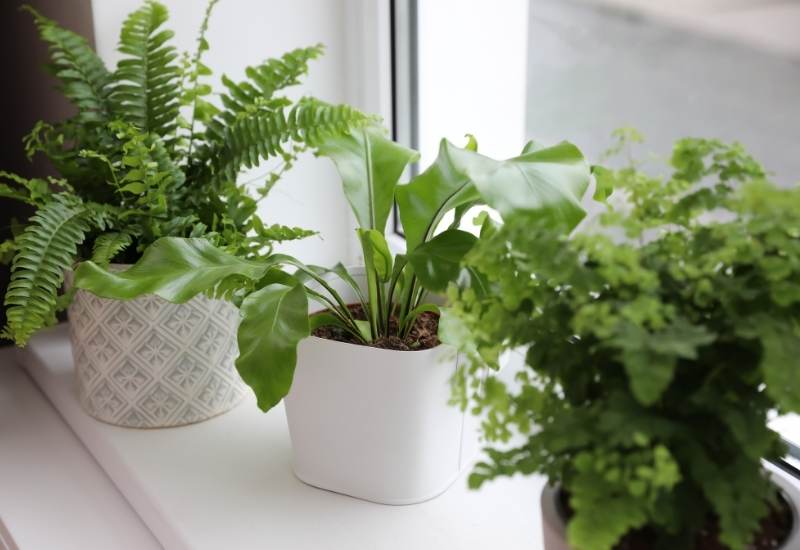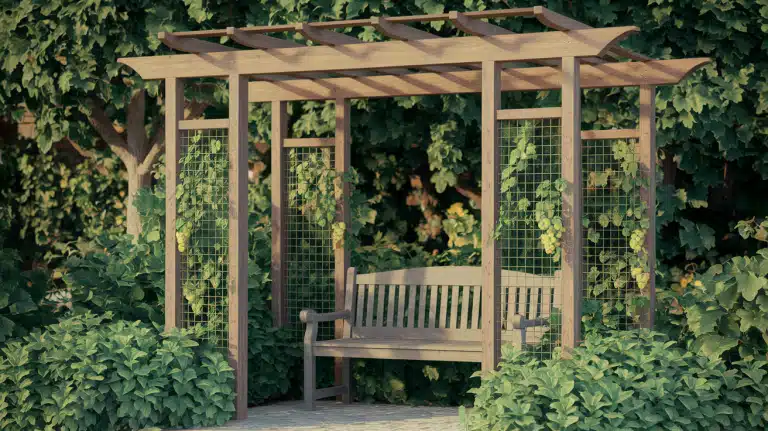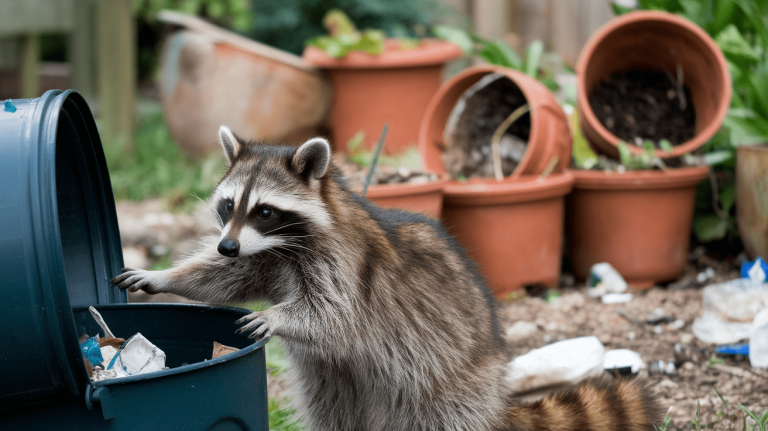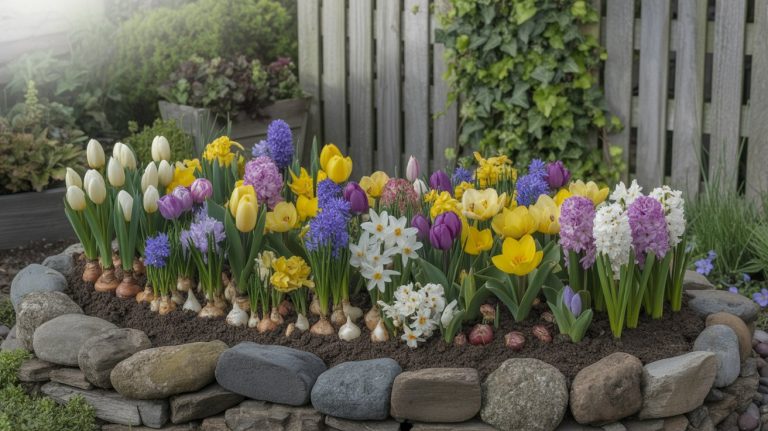30 Exclusive Fern Types to Enhance Your Garden
Walking through woods makes many people wonder about the different types of ferns and find it hard to identify those different ferns. Many ferns have been explained in this; it will be easy for anyone to understand the special feature of every fern type out there.
Ferns are amazing plants that come in all shapes and sizes, making them a perfect addition to any home or garden. With their lush green leaves and easy-going nature, ferns bring a touch of nature’s beauty right to your doorstep. In this, we’ll walk you through various fern types, ranging from the common Boston Fern to the exotic Birds Nest Fern.
Whether you’re looking to add a pop of green to your living room or create a calming emptiness in your backyard, ferns can do it all effortlessly.
Let’s start scrolling in the world of ferns and find the perfect fern companion for your home.
1. Autumn Fern (Dryopteris erythrosora)
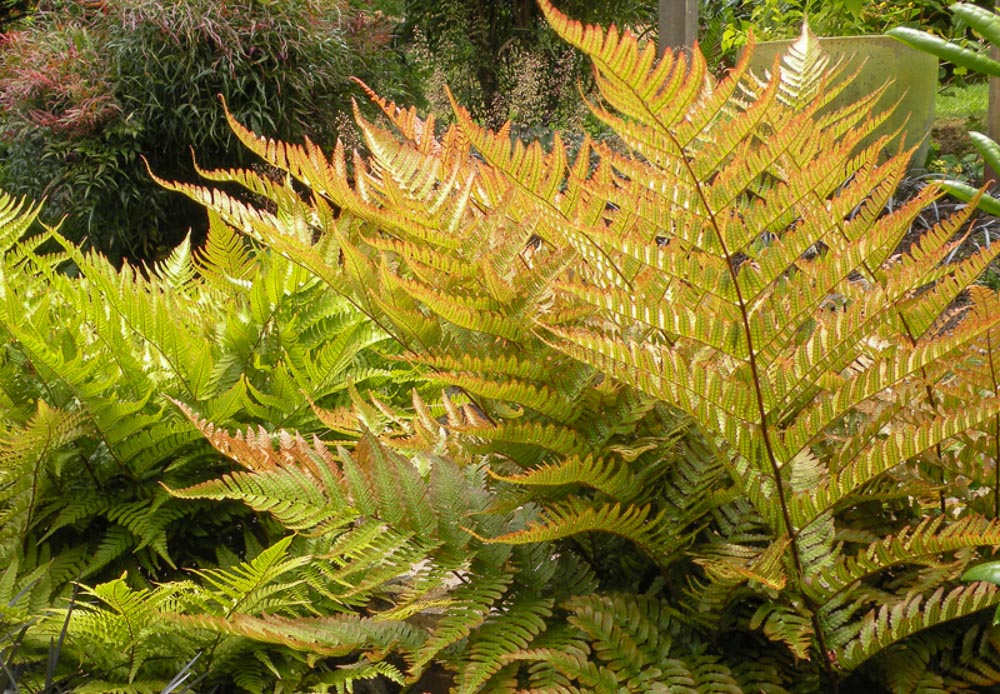
The Autumn Fern, scientifically named Dryopteris erythrosora, is a type of tree fern that originates from Tasmania, Australia. It belongs to the Cyatheaceae family and is characterized by its large fronds with cup-like shapes, which can reach lengths of up to 6 feet. These fern types feature a sturdy trunk and gracefully arching fronds composed of numerous leaflets, creating a feathery appearance. The Autumn Fern thrives in moist and shady environments, commonly found in rainforests and damp areas. To promote rapid growth, use a plant mister to water your ferns.
2. Boston Fern (Nephrolepis exaltata)

The Boston Fern, its other name Nephrolepis exaltata, is a fern commonly found in North and South America. It looks like a small tree because it grows tall and straight. The fronds of these fern types can reach up to 6 feet in height, making it one of the larger ferns. The fronds have glossy and strong leaves, giving the fern a nice and sturdy look. This fern type is usually found in wet and shady places like rainforests or cloud forests. Reading a fern care book can be pretty beneficial to gain more knowledge about these ferns.
3. Maidenhair Fern (Adiantum capillus-veneris)

The Maidenhair Fern is a favorite among fern lovers because of its beautiful silver-green fronds. This fern comes from New Zealand and belongs to the Pteridaceae family. It usually grows in groups and can be around 2 feet tall. If you ever plan to grow these in your house, do not forget to take care of these fern types using organic plant fertilizer. The Maidenhair Fern has elegant fronds that arch gracefully and have finely divided leaflets. The fronds’ silver-gray color adds a different feel to any indoor or outdoor space. This fern grows well in moderate to bright indirect light, so it’s suitable for both indoor and outdoor gardens.
4. Staghorn Fern (Platycerium bifurcatum)

The Staghorn Fern, identified as Platycerium bifurcatum, is a special and eye-catching fern. It comes from China and belongs to the Pteridaceae family. The fronds of these fern types have a unique pattern with alternating golden-yellow and dark green stripes, resembling a zebra’s stripes. This fern usually grows in a compact shape and is great for containers or small gardens. It prefers to be in partial shade or full shade and needs moist soil that drains well. The Staghorn Fern can add exotic beauty to any shaded area, and its vibrant colors make it a standout in any collection of ferns.
5. Sword Fern (Polystichum munitum)
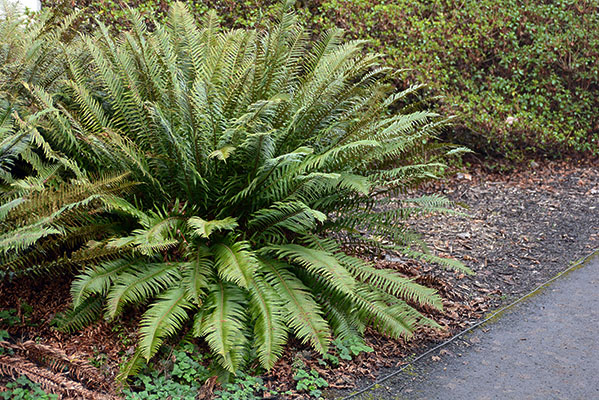
The Sword Fern, also referred to as Polystichum munitum, is an awesome fern from New Zealand. It belongs to the Dryopteridaceae family and is famous for being very tall, reaching heights of up to 40 feet. It is one of the tallest tree ferns in the world. These fern types have silver-green fronds that can be several meters long. The fronds have many leaflets, giving them a delicate and lacy appearance. The Sword Fern likes soil that drains well and prefers to be in shaded or partially shaded areas. It is often found in temperate rainforests and can create a striking focal point in any garden or landscape. It can boost the look of your garden by planting this fern in your garden, and don’t forget to water it using a plant watering can.
6. Hart’s-Tongue Fern (Asplenium Scolopendrium)
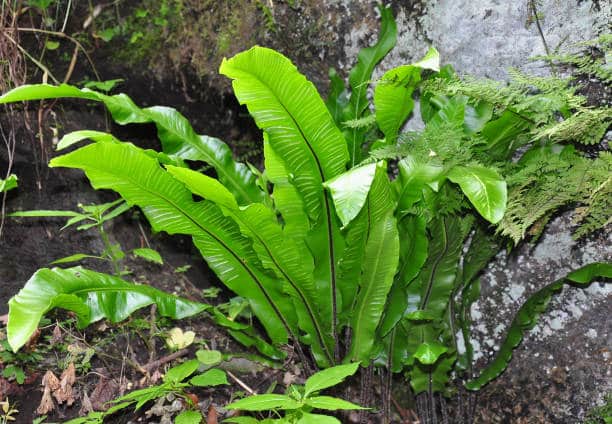
Hart’s-tongue Fern, also known as Asplenium scolopendrium, is a special fern that grows in Europe, including the British Isles. It is called Hart’s-tongue Fern because its leaves are long and narrow, like a deer’s tongue. If you plan to plant these fern types in your house, you can use drainage pots which will help them to grow properly. One cool thing about Hart’s-tongue Fern is that its leaves are always green, and they are tough. They can grow up to 1.5 feet long and have a simple shape, making the plant look nice and neat. The leaves grow right from a short, fleshy root, which makes the fern look interesting.
7. Button Fern (Nephrolepis Cordifolia)

The Button Fern is a delightful species of fern that thrives in various regions of North America. Its different feature is its nice fragrance, similar to freshly cut hay, which is released when its leaves are gently crushed or brushed against. This unique olfactory characteristic adds an extra sensory delight to any garden or natural setting. As the fern types prefer shaded or partially shaded areas, consider using outdoor shade cloth to create the ideal environment for the fern to thrive. One cannot help but be amazed by the beauty of the Button Fern’s foliage. Its delicate, lacy leaves show a complex pattern, making it a premium addition to any landscape.
8. Silver Lace Fern (Pteris Cretica)
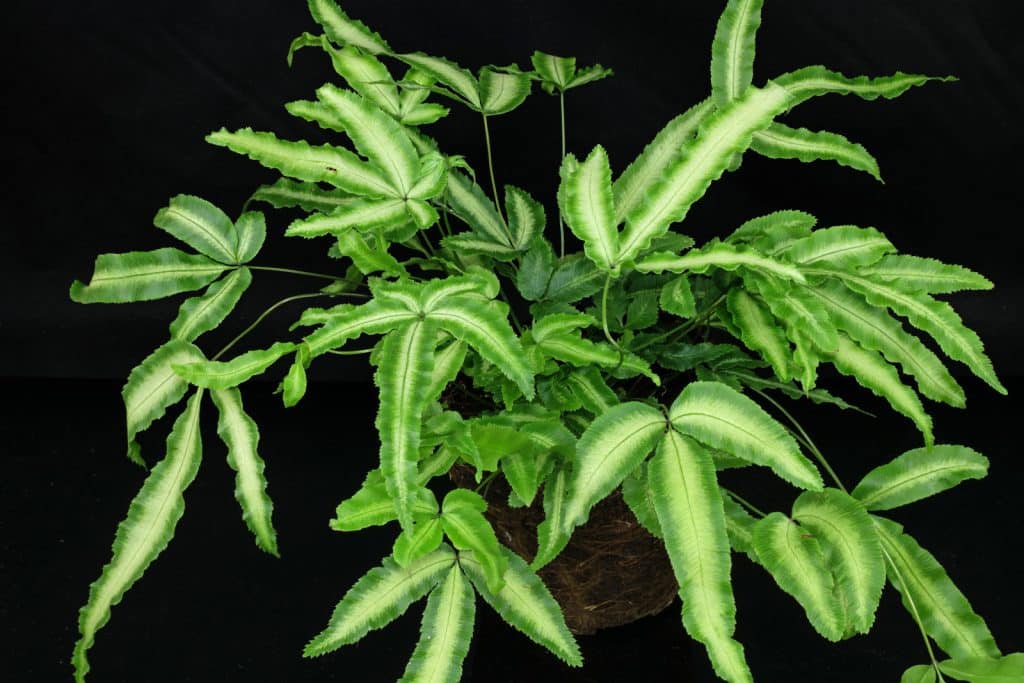
The Silver Lace Fern, scientifically known as Pteris cretica, is a lovely fern species that adds a beautiful vibe to any garden or indoor space. With its delicate, lacy fronds and silvery-green foliage, this fern stands out as a popular choice among fern fans. It has a complicated cut, feathery leaves that give it a lacy look with a pretty silver-green color. The fern typically grows to a manageable size, reaching a height of around 12 to 18 inches (30 to 45 centimeters) and spreading to about 12 to 24 inches (30 to 60 centimeters) wide. Native to regions with hot climates, the Silver Lace Fern grow in incomplete to full shade and prefers well-draining, fertile soil with adequate moisture. It can be grown both indoors and outdoors, making it versatile for various settings.
9. Rabbit’s Foot Fern (Davallia Fejeensis)
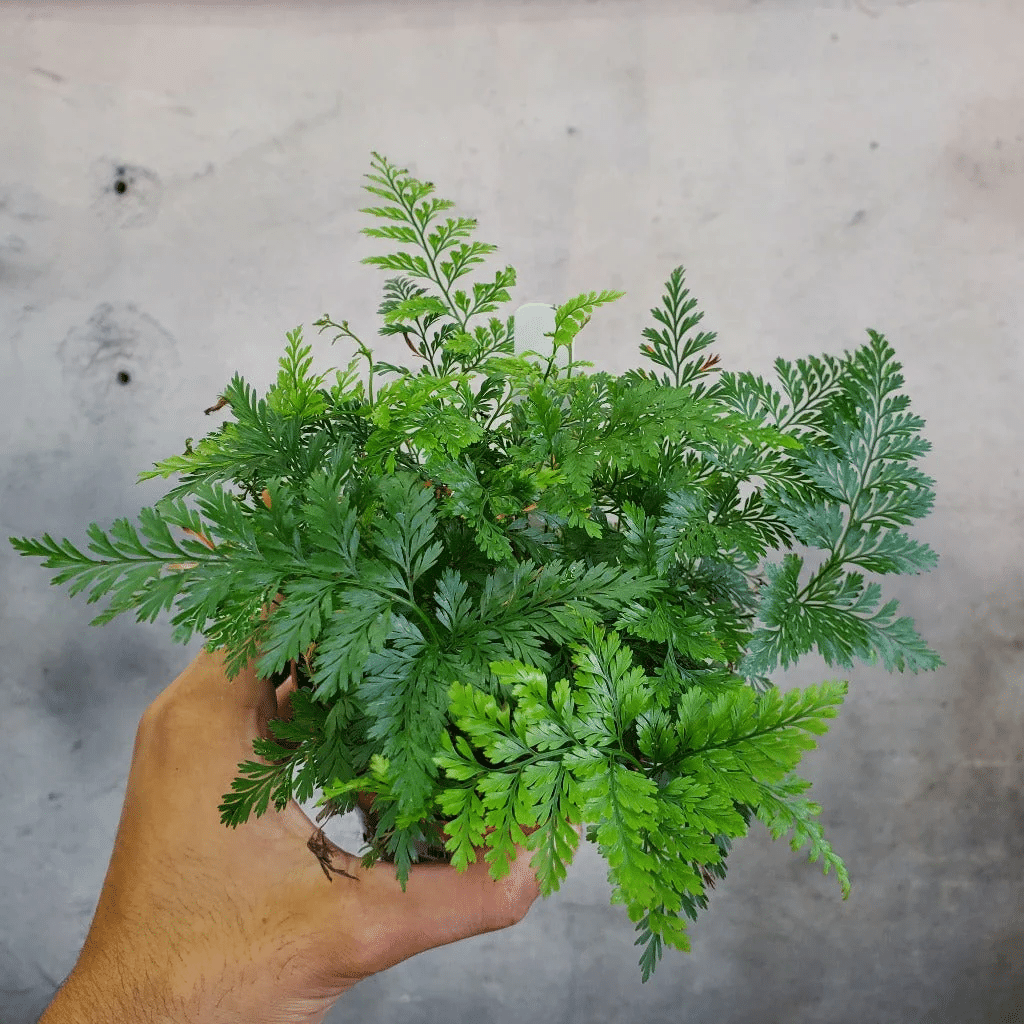
The Rabbit’s Foot Fern is a fine fern variety known for its unique appearance and soft, furry stems that resemble a rabbit’s paw. Native to tropical regions, these fern types are favored for their exotic look. Its fronds are lush green and can grow several meters in length, creating a lush canopy. Perfect for shady environments, the Rabbit’s Foot Fern thrives in moderate temperatures, making it an ideal choice for gardeners looking to add a touch of the tropics to their landscape. Regular pruning with a reliable pair of shears will help maintain its graceful appearance and remove any dead fronds.
10. Cinnamon Fern (Osmundastrum Cinnamomeum)

The lovely Cinnamon Fern, scientifically known as Osmundastrum Cinnamomum, is an amazing fern species native to North America. Renowned for its distinctive look, this fern has leaves that look like a fancy, frilly collar, which makes it special and different from other fern types. Improve the growth and vitality of your cinnamon fern with a suitable garden fertilizer. The Exquisite Cinnamon Fern has fronds that are divided unevenly, making it look good. When it grows fully, it can reach about 2 feet tall, making it stand out in any garden or landscape. Its leaves are dark green and shiny, which adds brightness and makes it look even more attractive.
11. Ostrich Fern (Matteuccia Struthiopteris)
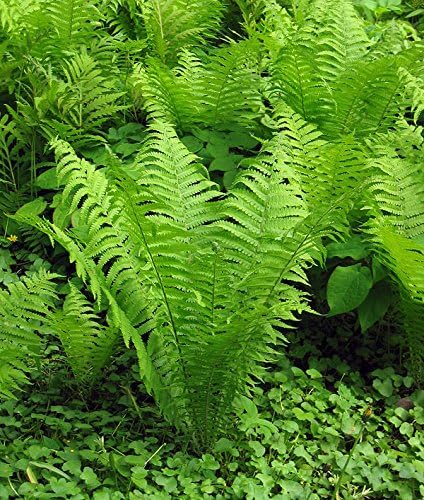
The Ostrich Fern, scientifically known as Matteuccia struthiopteris, is a highly sought-after fern species that thrives in various regions of North America and Europe. Renowned for its different leaves that look like the feather of an ostrich, this fern shows a remarkable combination of size and vibrant greenery. Towering above the forest floor, the Ostrich Fern stands tall and straight, achieving impressive heights ranging from 3 to 6 feet. One of the unique features of the Ostrich Fern is its ability to flourish in shaded and damp environments.
12. Macho Fern (Nephrolepis Biserrate)
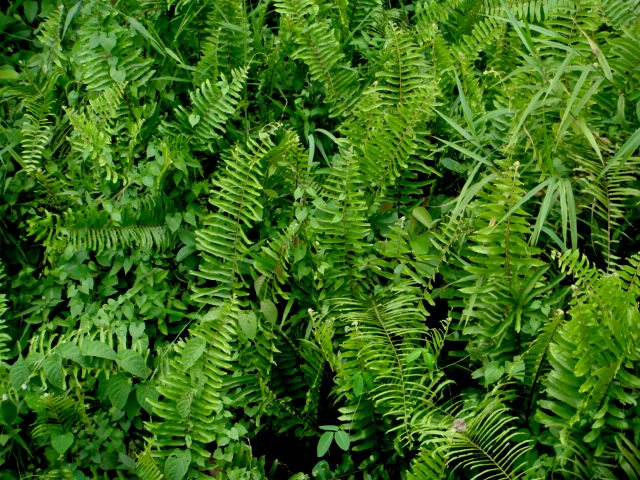
The Macho Fern, also known as Nephrolepis biserrate, is a favorite among gardeners because it’s big and tough. This tropical fern grows impressively, reaching up to 4 feet tall and spreading its lush leaves 5 to 6 feet wide Adding this fern type to a garden will only add up beauty to the garden. As the fern can reach heights of up to 40 feet, a garden trellis or support system can be useful in providing structural support as it grows. What makes the Macho Fern special is its wide, gracefully arching fronds that give off a tropical feel wherever it’s planted. Another great thing about this macho fern is that it can adapt to different environments.
13. Lemon Butter Fern (Nephrolepis Cordifolia ‘Duffii’)
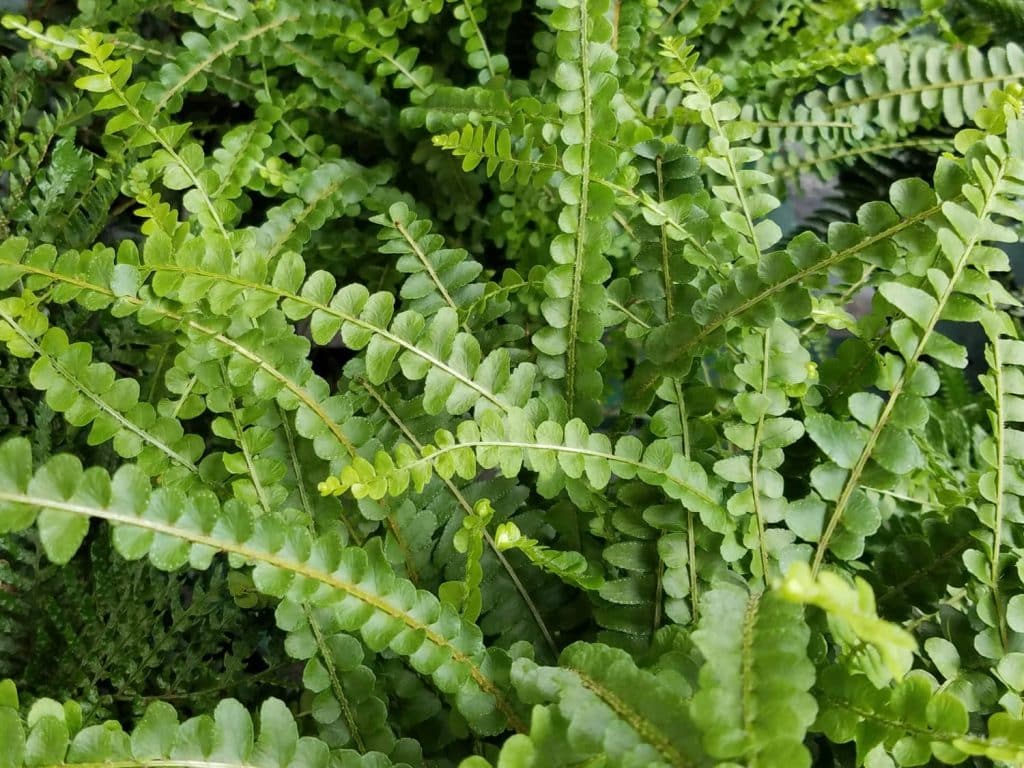
The Lemon Butter Fern, also known as Nephrolepis Cordifolia ‘Lemon Button,’ is a cool and colorful kind of fern. Its leaves are a bright lime-green, which instantly adds a pop of refreshing color to any place. The fern’s leaves are silky and make it look extra pretty. One special thing about the Lemon Butter Fern is that it’s not too big, so it’s great for indoors or outdoors. You can put it on windows, hang it in a basket, or even have it in a nice garden. It can live happily in many different places. Make sure to get a suitable potting mix specifically designed for ferns to ensure proper drainage and nutrition for your Lemon Butter Fern. So, if you’re thinking about fern types, the Lemon Butter Fern is a fantastic choice.
14. Western Sword Fern (Polystichum Munitum)
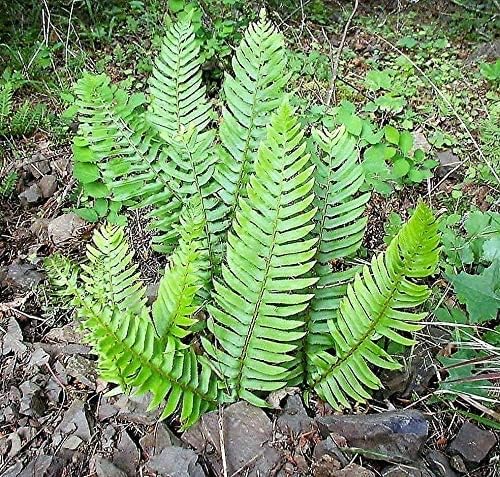
The Western Sword Fern is a super cool fern type that grows in the western parts of North America. It’s like a superstar in the plant world. Its leaves are a shiny, deep green color, and they look so pretty. Some of its fronds can grow long, like from here to the height of a grown-up person. That’s around 3 to 6 feet long. The amazing about this fern is that it can live in many different places. It’s like a hero of ferns, adapting to all kinds of environments. Whether it’s hot or cold, sunny or shady, this fern can handle it like a pro. If you want to add some magic to your garden, the Western Sword Fern is a great choice. It will make your garden look like a fairy tale forest. It’s also really good at cleaning the air, just like a natural air purifier. So next time you see a fern in the wild or in someone’s garden, see if it’s the Western Sword Fern.
15. Japanese Painted Fern (Athyrium Niponicum ‘Pictum’)
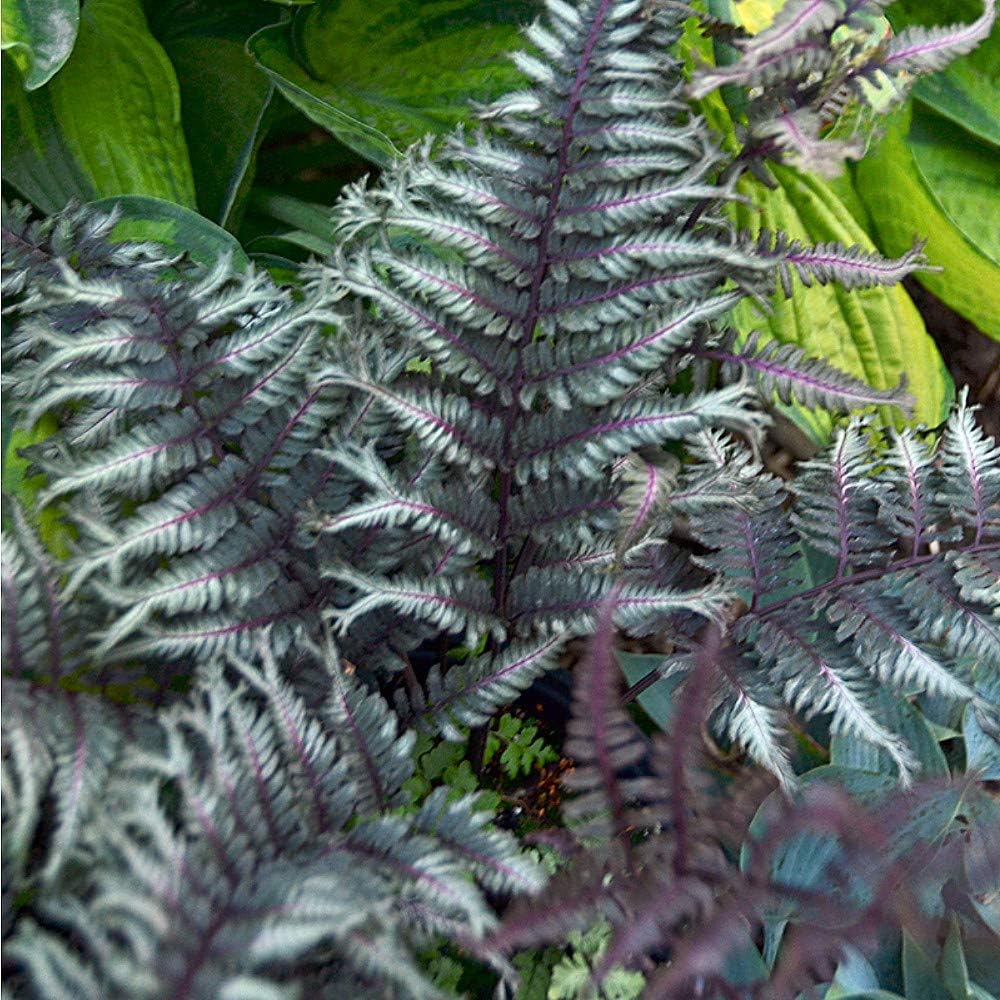
The Japanese Painted Fern (Athyrium Niponicum ‘Pictum’) is a beautiful and popular type of fern originating from Japan and eastern Asia. It has lovely silvery-gray fronds with attractive purple highlights, giving it a unique painted appearance. This fern grows to a moderate height of about 12 to 18 inches (30 to 45 centimeters) and forms clusters of arching fronds that add beauty to any place. It thrives in areas with partial to full shade and prefers soil that drains well and stays moist. Japanese Painted Ferns are strong plants that can withstand colder temperatures in USDA zones 4 to 8. They are easy to take care of and not attractive to deer. You can use them in many different gardens, like those in the shade or containers. These fern types are safe for both people and pets, making them suitable for family-friendly gardens.
16. Lady Fern (Athyrium Filix-Femina)
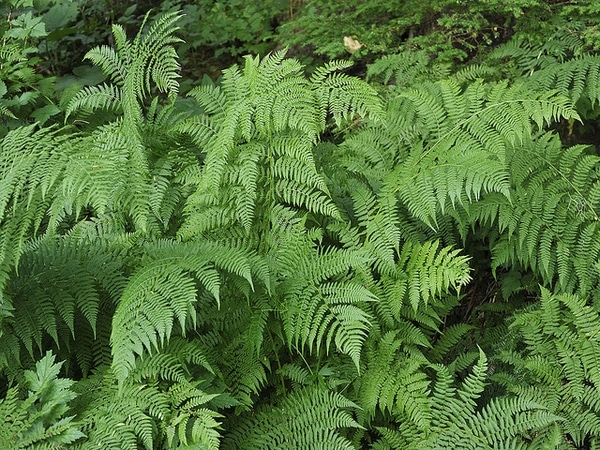
The Lady Fern is one of the amazing fern types with soft and lacy leaves. It loses its leaves at certain times of the year and is found in cool regions of the Northern Hemisphere, such as woodlands and meadows. It grows to heights of 1 to 3 feet (0.3 to 0.9 meters), giving it a graceful look. The Lady Fern type does well in soil that is moist and drains well, and it prefers to be in partial shade or receive filtered sunlight. The Lady Fern thrives in damp soil that drains well, keeping it happy and healthy. It prefers partial shade, where the sunlight is gentle. In this cozy spot, it looks lovely and catches everyone’s eye. Whether in a garden corner or a peaceful landscape, the Lady Fern is simply captivating and leaves a strong impression on everyone who sees it.
17. Holly Fern (Polystichum Neolobatum)
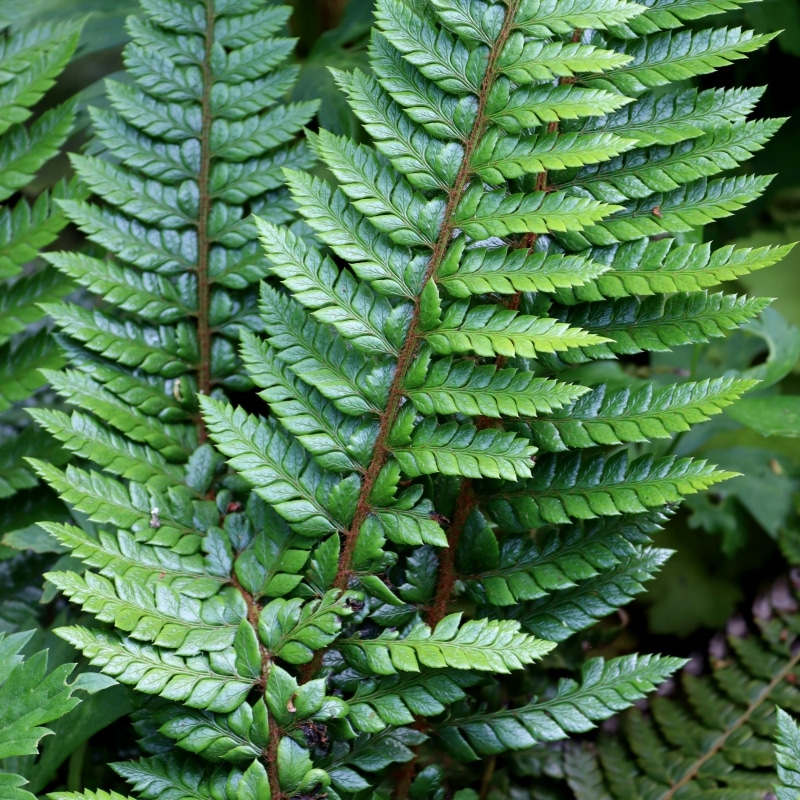
Meet the Holly Fern, a super cool fern with fabulous fronds that come in amazing colors like silver, purple, and blue. It’s like a living work of art in your garden. This fern is not too big, growing only 1 to 3 feet tall. Its leaves are very fancy-looking with lots of little parts, giving the fern a graceful and stylish look. The Holly fern type is a bit picky about where it likes to live. It prefers to stay in a place that’s not too sunny, so it enjoys hanging out in the shade or getting filtered sunlight. And it loves moist and well-drained soil to keep its roots happy.
18. Sensitive Fern (Onoclea Sensibilis)
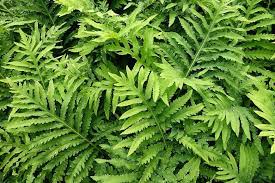
The Sensitive Fern, scientifically referred to as Onoclea sensibilis, is a classic and popular fern species that has been a favorite houseplant for many years. This evergreen fern type is native to various regions and is well-known for its lush, arching fronds. The Sensitive Fern is often grown as a hanging plant or in containers indoors. It thrives in bright, indirect light and consistently moist soil. These fern types require a humid environment and are a great choice for adding greenery to homes and offices. If you are going to have a Sensitive fern, use plant labels to keep track of each one’s name and care requirements.
19. Asparagus Fern (Asparagus Setaceus)

The Asparagus Fern, scientifically known as Asparagus setaceus, is not a true fern but belongs to the Asparagus family. This versatile plant features delicate that resembles fern fronds, hence its common name. Native to South Africa, the Asparagus Fern types are a popular choice for both indoor and outdoor settings. It is known for its tough growth and can be used as a ground cover or grown in hanging baskets. This fern prefers bright, indirect light and well-drained soil. Adding a layer of organic mulch around your fern can help retain moisture, regulate soil temperature, and deter weed growth.
20. Foxtail Fern (Asparagus densiflorus)
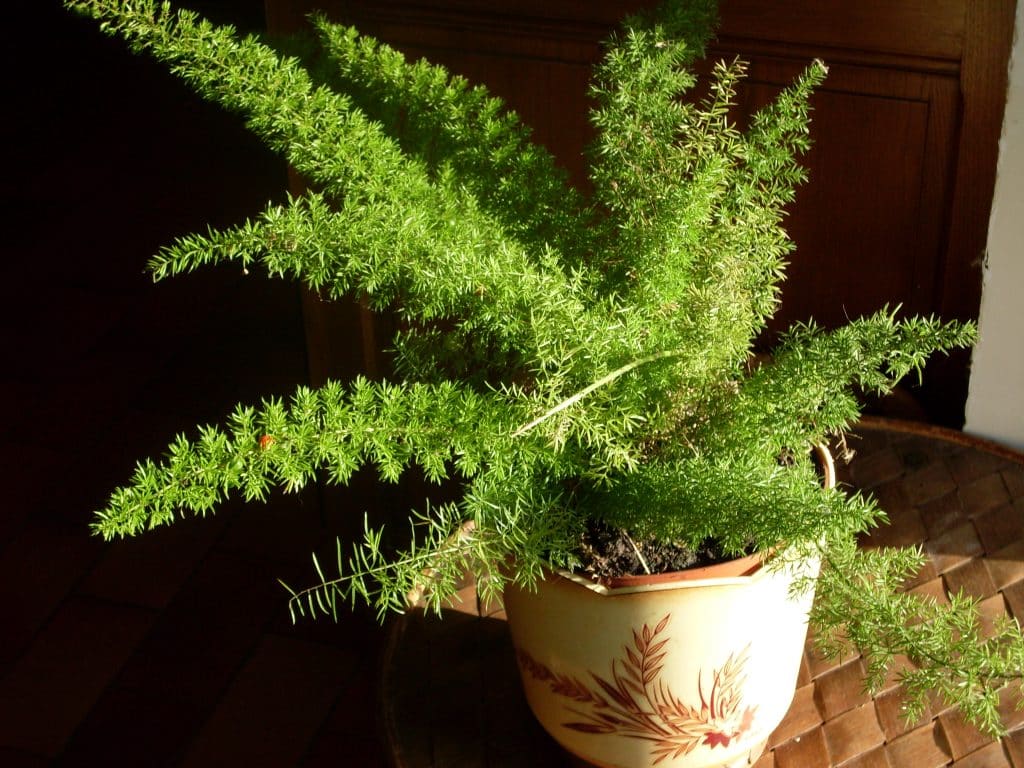
The Foxtail Fern is one of the fern types that looks like a fern but is part of the asparagus family. It comes from South Africa and has fluffy green fronds that look nice. The fronds are shaped like cylinders, similar to a fox’s bushy tail, which is why it’s called the Foxtail Fern. This plant is easy to take care of and can be grown indoors or outdoors. It likes sunlight but can also handle some shade, and it needs soil that drains well. People like to add this fern-like plant to their gardens or living spaces because it adds natural beauty and can adapt to different environments. You can grow these cute ferns to add more beauty to the garden. In case your foxtail fern is affected by pests like spider mites, insecticidal soap can help control the infestation without harming the plants.
21. Christmas Fern (Polystichum Acrostichoides)

The Christmas Fern is a pretty fern that stays green all year. It comes from North America and gets its name because it adds color during the holiday season. You can find these fern types in shady and damp areas in the woods. The fronds of the Christmas Fern are special. They are tough and shaped like a spear, about 30 to 90 centimeters long. The fronds are divided into parts that have teeth and lobes, making the fern look fancy. For those who may be away from home frequently, a watering spike or globe can slowly release water to keep your ferns hydrated. Underneath the long leaves, you can see small round spots where spores are arranged.
22. Interrupted Ferns (Osmunda Claytonia)

Interrupted Ferns, scientifically known as Osmunda Claytonia, are one of the interesting types of ferns that belong to the diverse fern family. These ferns are known for their unique leaves, which have a special pattern that sets them apart from other fern varieties. The leaf of Interrupted Ferns has a special pattern, making them interesting and eye-catching. They thrive in various habitats, such as woodlands, moist forests, and shaded spots along riverbanks. These ferns can grow to a moderate height, making them a great addition to shaded gardens or natural landscapes. Interrupted Ferns reproduce through spores, which are released from the fertile leaflets on their fronds. They are hardy and can tolerate different climatic conditions, making them suitable for temperate and cool regions.
23. Australian Tree Fern (Cyathea Cooperi)
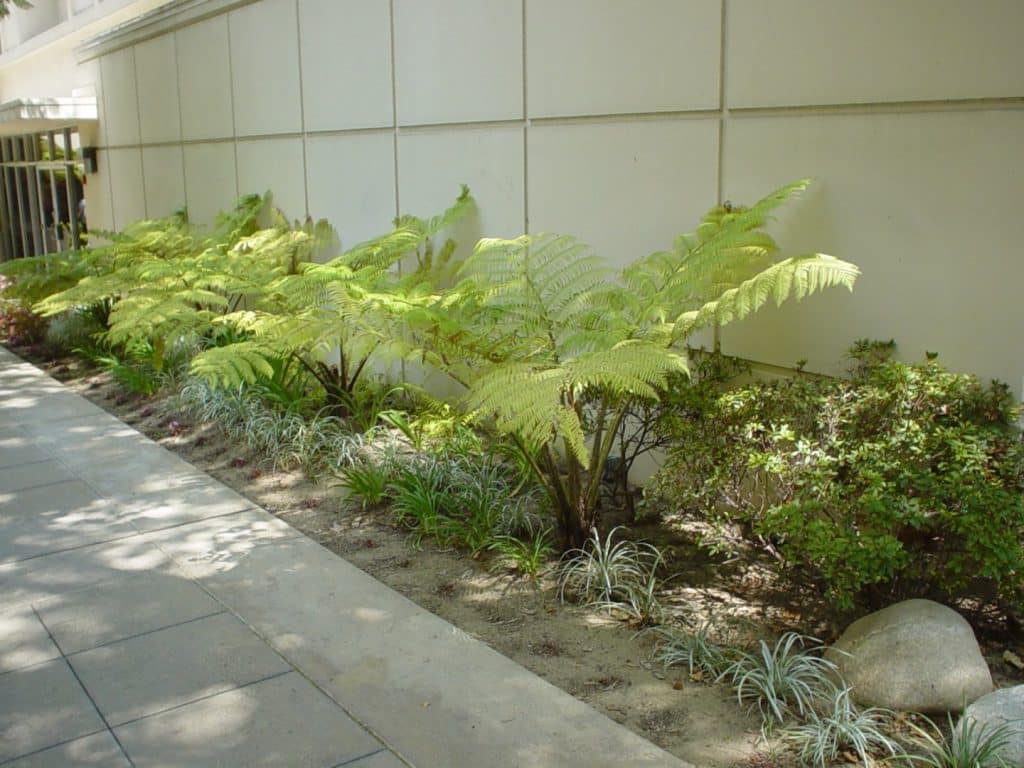
The Australian Tree Fern is a stunning fern that looks like a tall tree. It comes from Australia and some islands in the Pacific. People like to use these fern types to make gardens and landscapes more beautiful and tropical. The fronds of the Australian Tree Fern are big and look feathery, with a bright green color. If you find it challenging to gauge when to water your ferns, a watering meter can help measure the moisture level in the soil accurately. They are divided into smaller parts that give the fern a light look. The trunk of this fern is skinny and has a rough, brown layer on it, which makes it different. This fern likes to be in a place with a little bit of shade and soil that drains well.
24. Walking Fern (Asplenium rhizophyllum)
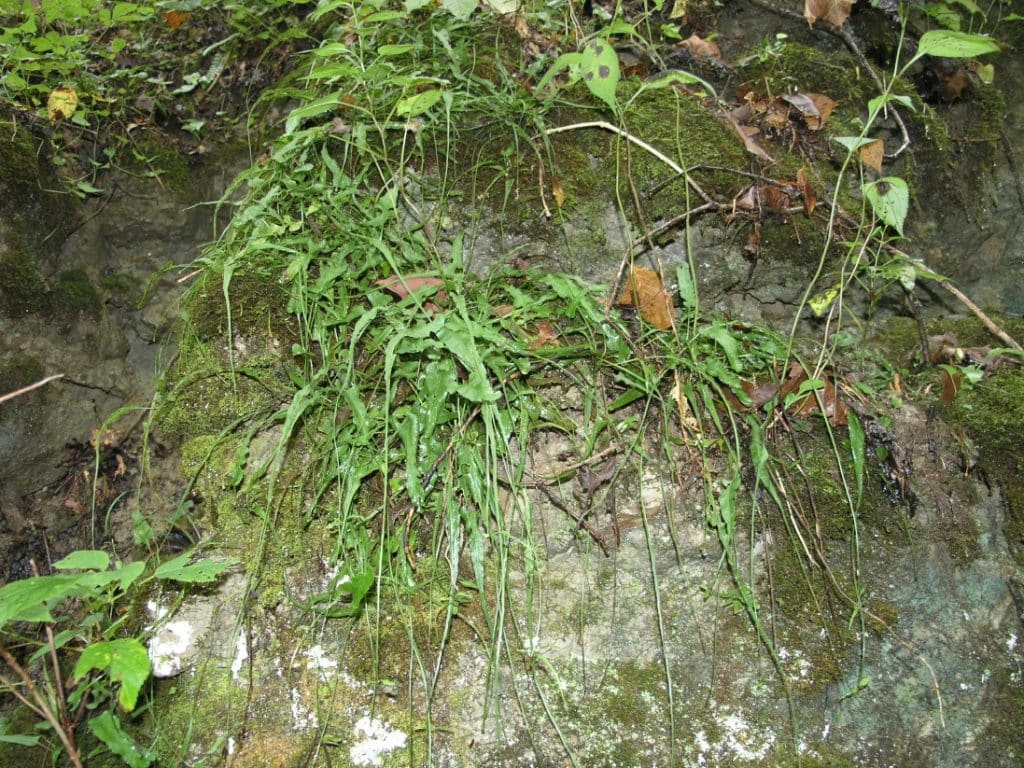
The Walking Fern (Asplenium rhizophyllum) is an attractive member of the 30 Types of Ferns. Its name comes from the way it appears to “move” as new fronds grow and root at the tips, creating an interesting sight. These ferns have long, dark green fronds that can grow up to 12 inches in length, and they reproduce by forming new plants at the tips of arching fronds that reach the ground. Native to North America, Walking Ferns prefer moist, shady areas with well-draining, slightly acidic soil, often found in limestone-rich habitats. They are easy to care for and can be a wonderful addition to shaded gardens or wooded areas. The unique growth pattern and delicate fronds make them sought-after ferns for gardens and nature experts.
25. Bird’s Nest Fern (Asplenium Nidus)
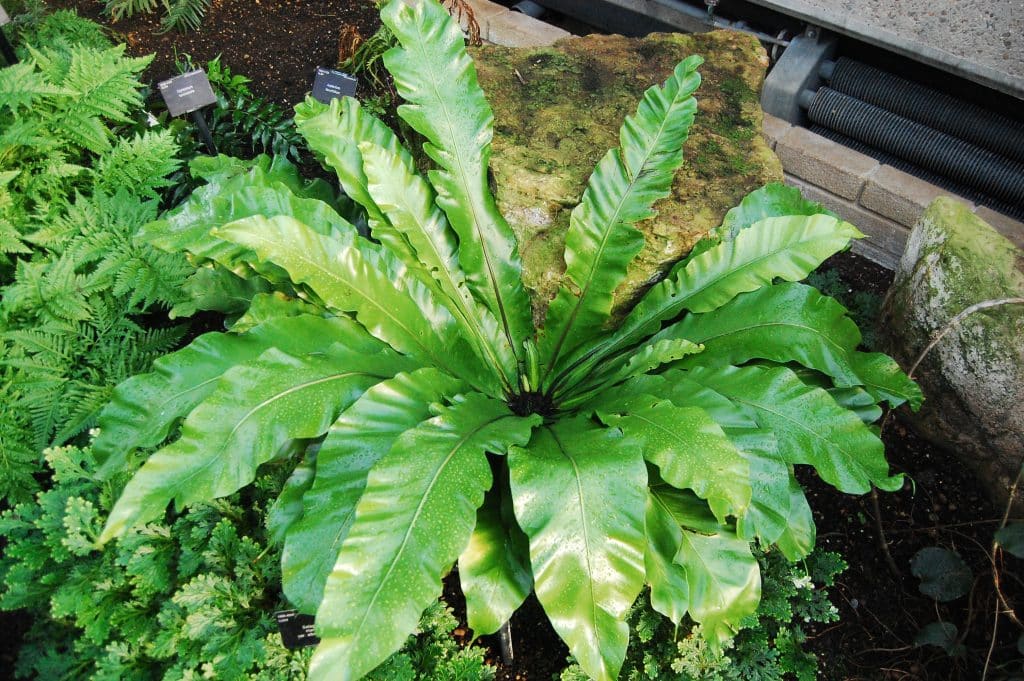
The Bird’s Nest Fern is an interesting fern that looks like a nest. It comes from warm places and is a good choice for growing inside because it’s easy to take care of. People like to put it in hanging baskets or on boards to show how pretty it is. The leaves of the bird’s nest fern types are wide and look like straps, and they can be up to 90 centimeters long. They grow in a circle shape, making a nest in the middle. The leaves are bright green and feel smooth and shiny, which makes them look even prettier. This fern likes light that doesn’t shine directly on it and needs to be sprayed with water regularly to keep the air moist. If you have a bird’s nest fern, To highlight the fern’s nest-like appearance, consider displaying it on attractive decorative boards or mounts.
26. Dwarf Japanese Holly Fern ( Cyrtomium Falcatum )
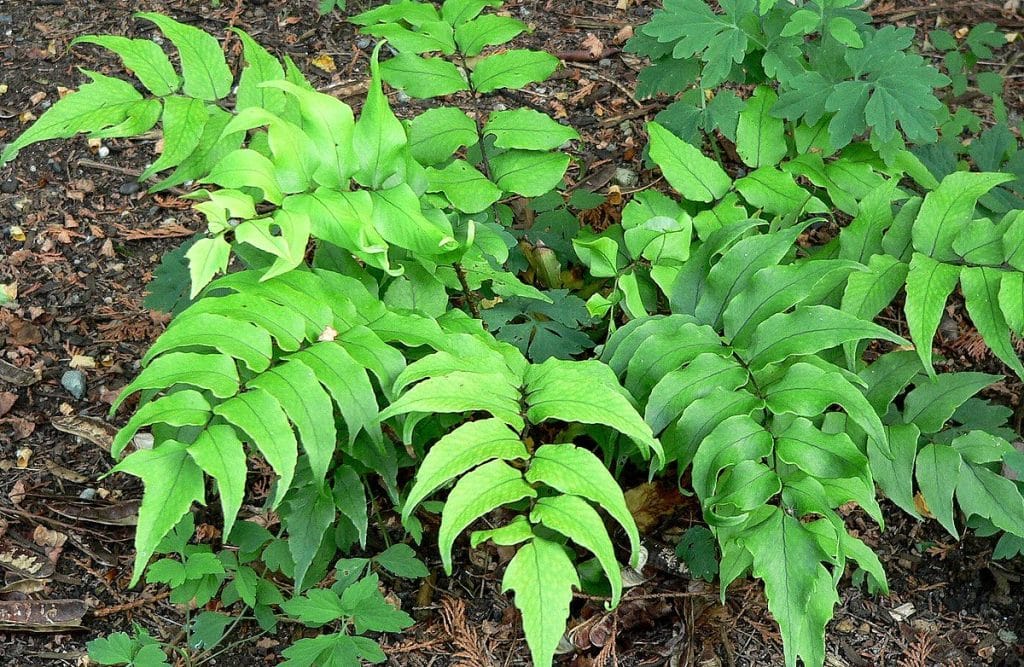
The Dwarf Japanese Holly Fern, scientifically known as Cyrtomium falcatum is an extraordinary species of fern renowned for its similarity to a rabbit’s foot due to its fuzzy roots. This beautiful plant originates from the tropical forests of Fiji and has gained great popularity as a delightful houseplant, cherished for both its aesthetic appeal and its unique growth patterns. The Dwarf Japanese Holly Fern showcases an amazing formation of lacy leaves that easily enhance the visual charm of any indoor setting. These cute fern types can reach an impressive length of 30 to 45 centimeters, amazingly swinging in the air. Choose a decorative plant pot that complements the aesthetics of your Dwarf Japanese Holly Fern. Look for natural design pots to enhance the overall look.
27. Japanese Tassel (Polystichum polyblepharum ‘Makinoi’)

The Japanese Tassel Ferns are fern types that get their name from the shape of their leaves, which look like the horns of a male deer. It’s found in hot areas and has become popular as a mounted or hanging plant because it looks dramatic and doesn’t need much care. The fern has two kinds of leaves: the ones that produce tiny seeds and the ones that don’t. To complement the Japanese Tassel Fern’s aesthetic, consider botanical wall art featuring ferns or natural elements. The seed-producing leaves are flat and shield-shaped, like antlers. They’re brown and protect the seeds. The other leaves are green and have lobes, like leaves on a tropical plant. This fern can be grown on wood or in a hanging basket and is great for starting conversations.
28. Cretan Brake Fern (Pteris Cretica)
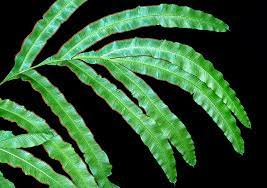
The Cretan Brake Fern (Pteris cretica) is a lovely and compact fern native to the Mediterranean region, including the island of Crete. It has wavy, dark green fronds that grow circular, reaching about 18 to 24 inches (45 to 60 centimeters) in length. It grows at a moderate pace and requires minimal trimming, making it perfect for smaller gardens or indoor planters. It grows in bright, indirect light, making it suitable for places with filtered sunlight or partial shade. Regular watering to keep the soil moist but well-drained is essential. This fern prefers slightly acidic, well-draining soil, and a mixture of peat moss, perlite, and regular potting soil can be used as a suitable growing medium.
29. Kimberley Queen Fern (Nephrolepis Obliterata)

The Kimberley Queen Fern is a unique fern that looks like a crocodile’s skin. It’s found in Australia and the Pacific islands and has become popular as a houseplant because it looks good and doesn’t need much care. The fern’s leaves are wide and tough, and they can be up to 60 centimeters long. They’re a dark green color and have deep cuts, which makes them look like crocodile skin. The leaves grow in a circular pattern, which looks very interesting. These fern types are likes bright light but not direct sunlight, and it needs a bit of humidity to grow well. Add a touch of natural beauty to the base of your Kimberley Queen Fern with decorative moss, enhancing its overall vibe. It’s a great choice for indoor gardens.
30. Resurrection Fern (Selaginella lepidophylla)
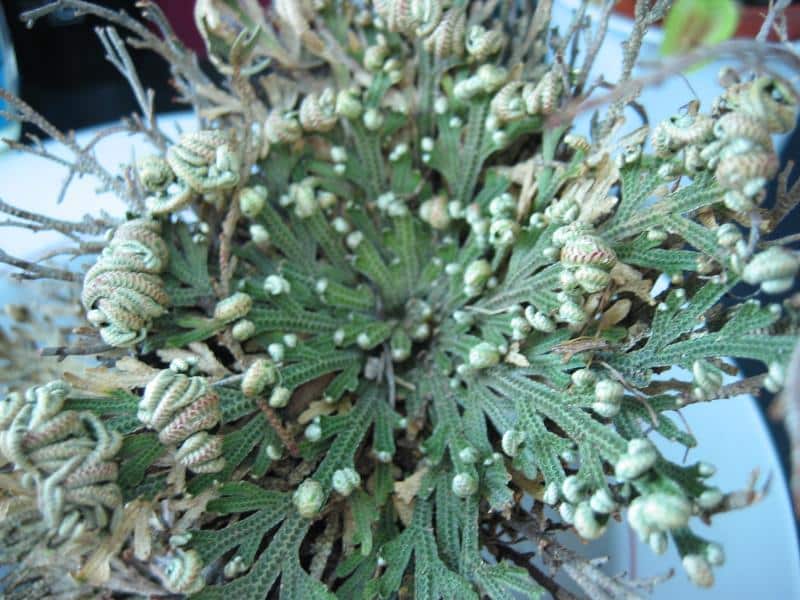
The Resurrection Fern (Selaginella lepidophylla) is a fascinating type of fern found in dry regions of North America. It got its name because it can “come back to life” after being extremely dry. During dry times, it curls its fronds inward and looks brown and lifeless, but when it gets moisture, it comes back to life and unfurls its fronds. This helps it survive in tough environments. The Resurrection Fern is a small and delicate type of fern with green feathery fronds, making it a pretty addition to gardens. It grows well in soil that drains effectively and can thrive in shaded or partially sunny areas. People find it interesting and like to talk about it because it’s a tough fern. It can survive without water for a long time and then revive when it gets water, which is truly amazing.
Conclusion
All in all, ferns are interesting plants that come in many shapes, sizes, and colors. From the common Boston fern to the cute Bird’s Nest fern, there’s a fern for everyone. Learning about these ferns has been interesting, and we’ve found out how they can add a touch of nature’s wonder to any place.
Whether you want a small fern for a corner or a big fern for your garden, there are so many options to choose from. Remember, ferns are easy to care for and don’t need much work, so they’re great for both experienced and new plant lovers. They bring a fresh feeling to any spot and make indoor and outdoor spaces look beautiful.
However, exploring the world of ferns has been a great experience, and we encourage everyone to bring the beauty of these wonderful plants into their lives.
So go ahead, pick your favorite fern, and enjoy the simple pleasure of having nature’s green charm around you.

